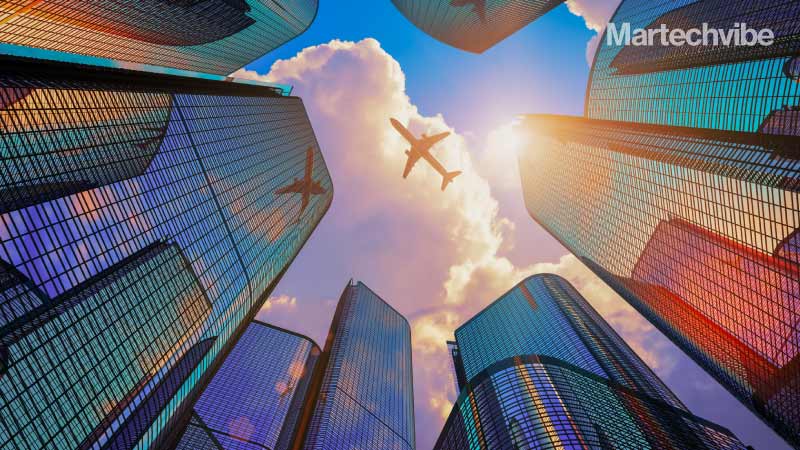Travel Marketers Feel Prepared For the Digital and Cookieless World
Since the pandemic, the travel industry has suffered massive losses and is still recovering by leveraging innovative strategies. Digital travel marketers are approaching investments with the aim of increasing agility and making operations simpler and more efficient. Direct response campaigns are an attractive proposition for brands spending cautiously and looking to drive sales. In a […]
Topics
What to Read Next
- TripleLift Announces Partnership with Attain to Unify Context and Commerce
- Seedtag Partners with IRIS.TV to Expand Contextual Signals for CTV Targeting
- Magnite, Cognitiv Announce Deep Learning Integration for Real-Time Curation
- Dscout Announces Integration with HeyMarvin
- Comscore Launches Program-Level Capabilities within CCM

Since the pandemic, the travel industry has suffered massive losses and is still recovering by leveraging innovative strategies. Digital travel marketers are approaching investments with the aim of increasing agility and making operations simpler and more efficient. Direct response campaigns are an attractive proposition for brands spending cautiously and looking to drive sales.
In a recent Sojern report, How Travel Marketers Are Activating Digital Advertising in 2021, 88 per cent of companies have either increased or kept their digital advertising strategy budget the same since COVID-19, and over 56 per cent agree that the online environment is favourable for direct response campaigns – an attractive proposition for brands spending cautiously and looking to drive sales.
“The last 18-months have been quite the rollercoaster for travel marketers navigating the global pandemic, but one thing is clear: travel marketers are more focused than ever before on effectively and efficiently spending precious resources to drive a business return,” said Noreen Henry, Chief Revenue Officer, Sojern. “In this environment, you need to be agile, data-driven and optimistic—travel is coming back, and it’s a great time to take part in that recovery.”
In the MEA region, 55 per cent of organisations are dedicating 26 per cent to 49 per cent of their overall marketing budget to digital advertising. Identifying what works and doesn’t is more important than ever to ensure that the funds are allocated effectively. Therefore, the onus on travel marketers is to identify and prioritise the optimal mix of media for their multi-channel campaigns.
One of the biggest areas of anticipated digital ad spend growth in the coming years will be programmatic. This growth is partly being driven by the increasing use of retargeting by travel and hospitality firms. Brands are also incorporating more of their own data into programmatic advertising strategies. Insights gathered from first-party data are informing travel advertisers on their best targeting options for programmatic buying. According to the survey report, 62 per cent of companies have a high or very high priority regarding readiness around the cookieless world.
Google’s pending changes to third-party cookies in Chrome put marketers on notice. How does it impact performance? In the MEA region, 50 per cent of respondents believe it to have a positive impact. “We see great opportunity in the move away from third-party cookies. The cookieless techniques we are moving to provide consumers with greater control over privacy and marketers the ability to do highly effective people-based marketing versus the current device-based marketing that cookies require,” said Dave Goulden, Sojern’s Vice President of Product.
Meanwhile, spend on mobile advertising has also been scaling to meet demand. According to Digital Vidya, more than 78 per cent of business travellers use a smartphone during the trip planning process, and around 67 per cent of travellers do online research before making any decision relating to travel.
Also Read: 74% of Consumers Expect A Hybrid Customer Journey: Report
Has Performance Marketing Put an End to Branding?
Not really. Most brands invest in both branding and performance campaigns. The Sojern report demonstrates that 13 per cent of brands claimed that most of their budget is on branding or evenly split between the two. Trust and loyalty were the most common reasons travel marketers invest more heavily in branding than performance campaigns. For them, loyalty is better when the focus is on branding. Even during the data-driven digital age, traditional brand advertising is important.
Future Trends in Ad Tech
Machine Learning (ML) and Artificial Intelligence (AI) top the list of ad tech options that our respondents plan to increase their usage the most in 2021 and 2022. Thirty five per cent of MEA respondents agreed. Thirty five per cent of the MEA respondents believe Artificial Intelligence (AI) and Machine Learning (ML) to be the most popular ad tech that will continue to increase in the MEA region, followed by interactive video (25 per cent), blockchain (20 per cent), and virtual reality (15 per cent).
While AI and ML are the most exciting technology, experts are concerned about the challenges that might appear. Technical issues include the higher costs of maintaining records and working on them regularly, technology risks, and constant spending on technology upgrades. Organisations can also complain of maintaining a flexible budget to improvise on the AI and ML metrics and include them in core strategies.
The MEA region is watching the inflow of customers from countries they typically see visitors from. The restoration of access to public places is something that some the travel brands have been counting on, as such organisations will need to be eligible to accommodate larger crowds in close proximity.
Nevertheless, travel marketers feel prepared for the cookieless world, with many having advanced data tracking capabilities and alternative methods of direct outreach to consumers.
Also Read: Future of Travel Industry, Heather Redling, Head of Marketing, Badr Investment Group









































































































